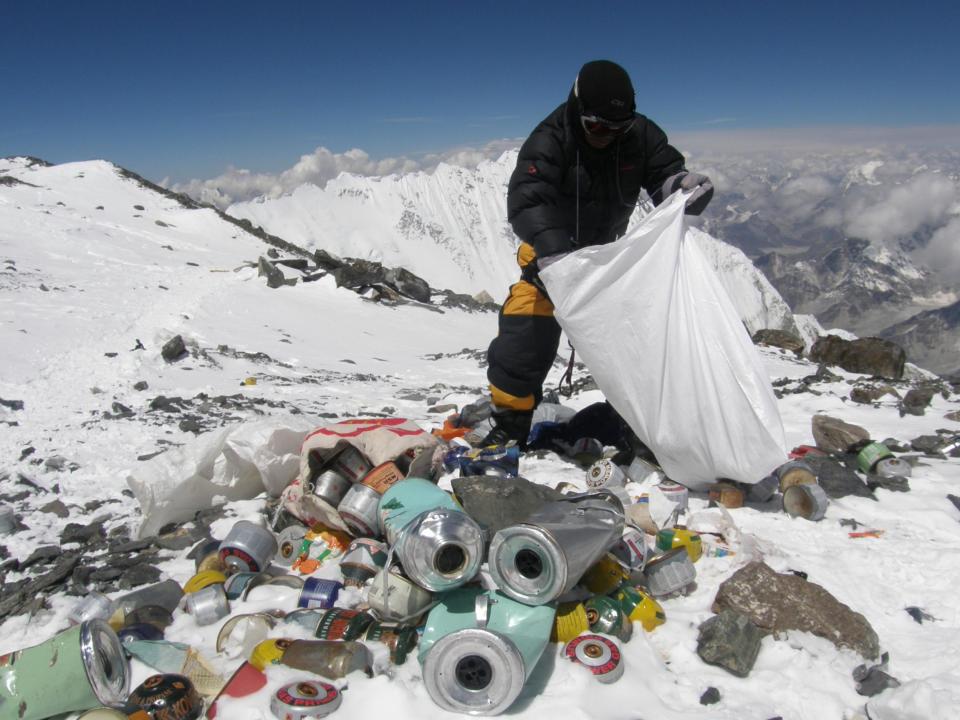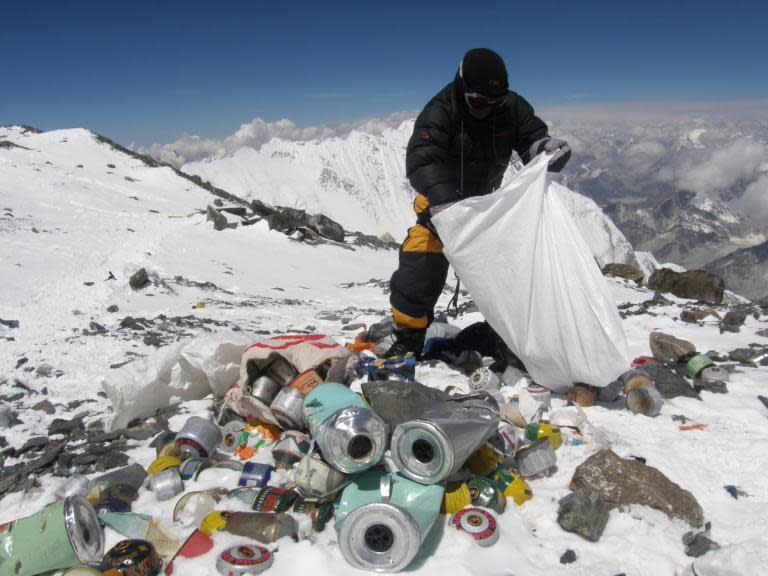China to cut numbers of Everest climbers by a third as rubbish clean-up begins
China plans to drastically cut the number of climbers allowed to take on Mount Everest in 2019 and limit the climbing season to spring, according to state media.
The total number of climbers attempting to reach the summit from the north side will be capped at 300 this year, a third fewer than normal, as the country begins a large-scale clean-up of the world’s highest peak.
Rubbish collected will include plastic bags, oxygen tanks, tents and cooking equipment, plus the bodies of climbers who died while more than 8,000m up the mountain.
China has set up stations to sort, recycle and break down the rubbish; on the Nepalese side, organisers have started sending large waste bags with climbers during the spring climbing season to collect trash that can be winched back to base camp by helicopters.
The Independent reported last year that human waste can also be a problem on Everest – in the roughly two months that it takes to reach the summit, the average climber will have produced nearly 60 pounds of excrement.
In 2018, porters carried down 14 tons of waste from base camp and other locations. It is dropped into pits on Gorak Shep, a frozen lake bed near a village 17,000 feet above sea level.
Mallory: The Everest enigma
Mallory: The Everest enigma
1/4
GETTY IMAGES
2/4
EPA
3/4
DAVID SANDISON
4/4
NARENDRA SHRESTHA / EPA
Some 60,000 climbers and guides visit the Chinese side of the 8,850m mountain each year, known in China by its Tibetan name, Mount Qomolangma, which means “Goddess of mother snows”.
However, the number of people who reached the top was just 648 in 2017, 202 of whom made the climb from the north side, according to the non-profit group Himalayan Database. The rest scaled Mount Everest from the Nepalese side.
Six people died in the attempt that year, one on the north side, while in 2018, at least five climbers died or went missing trying to reach the summit. Several people die each year while climbing Everest, many of these in the “death zone” – where the air is too thin to sustain humans – above 8,000m.



